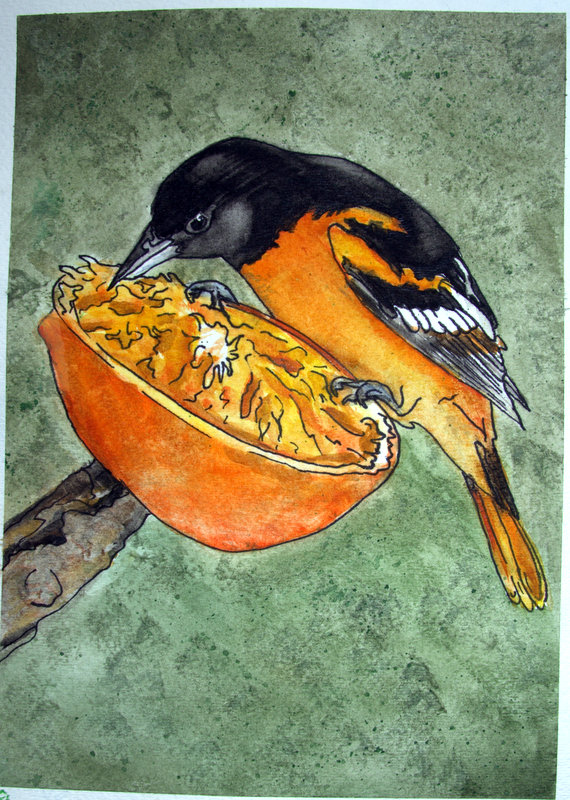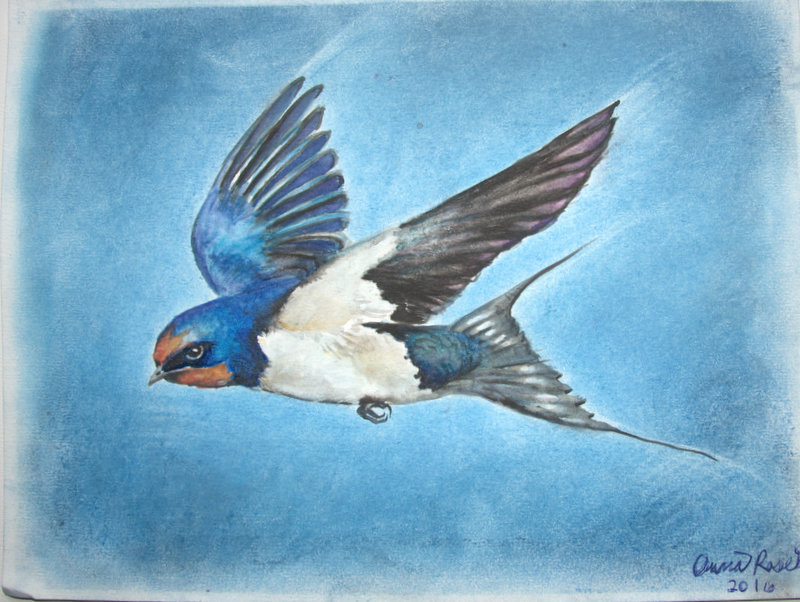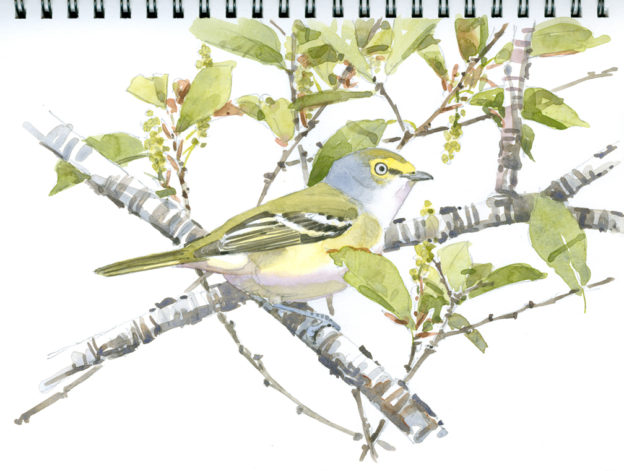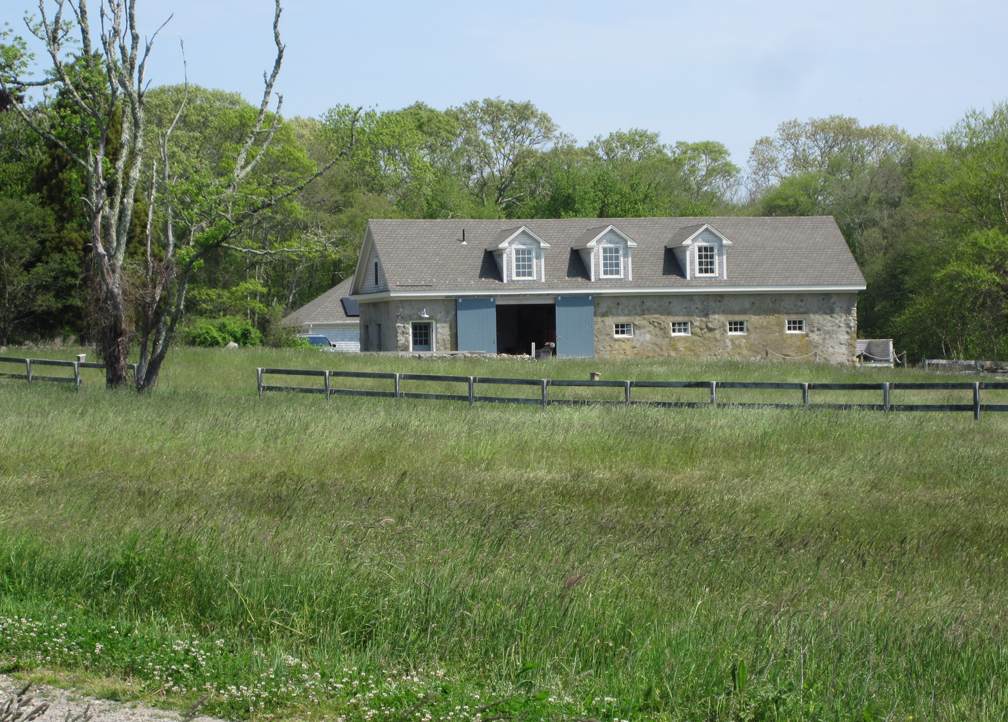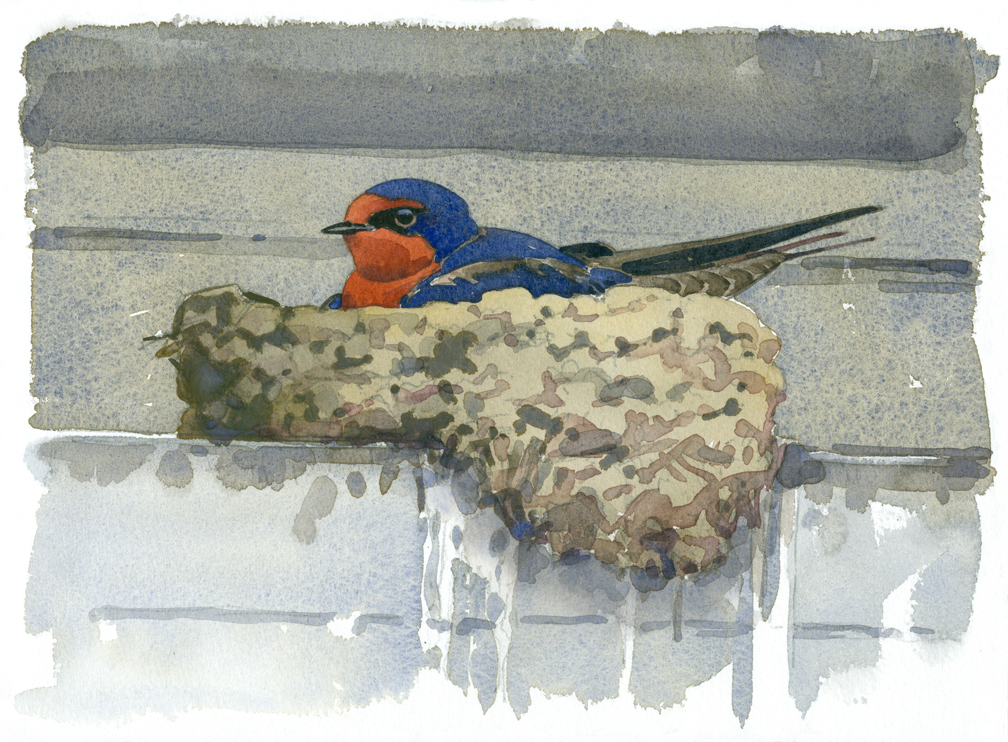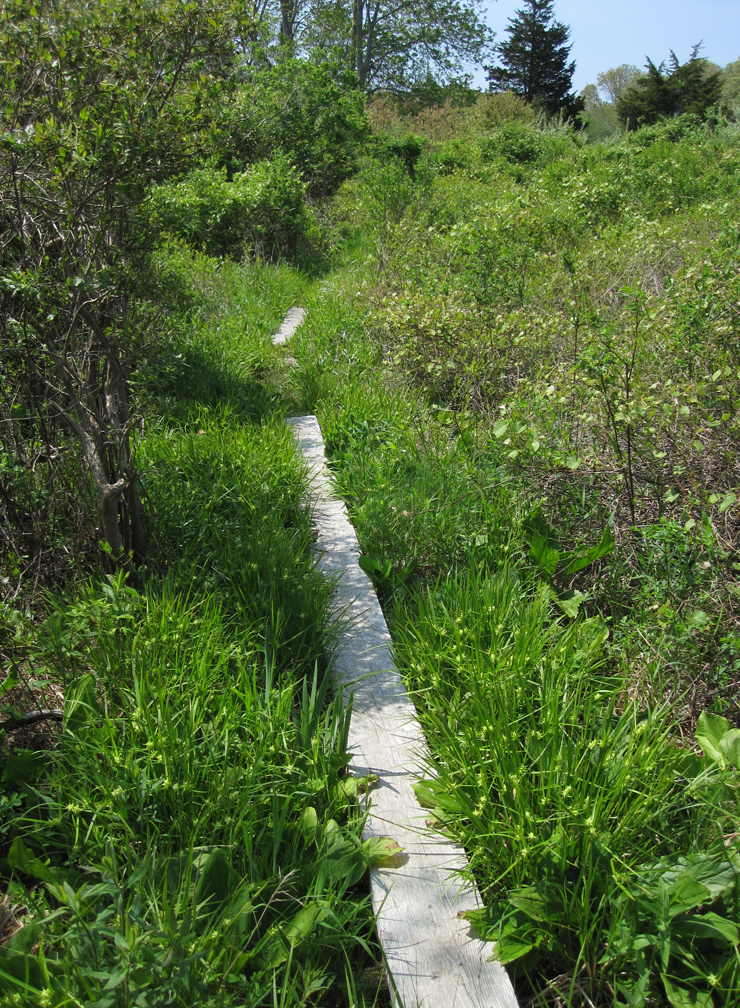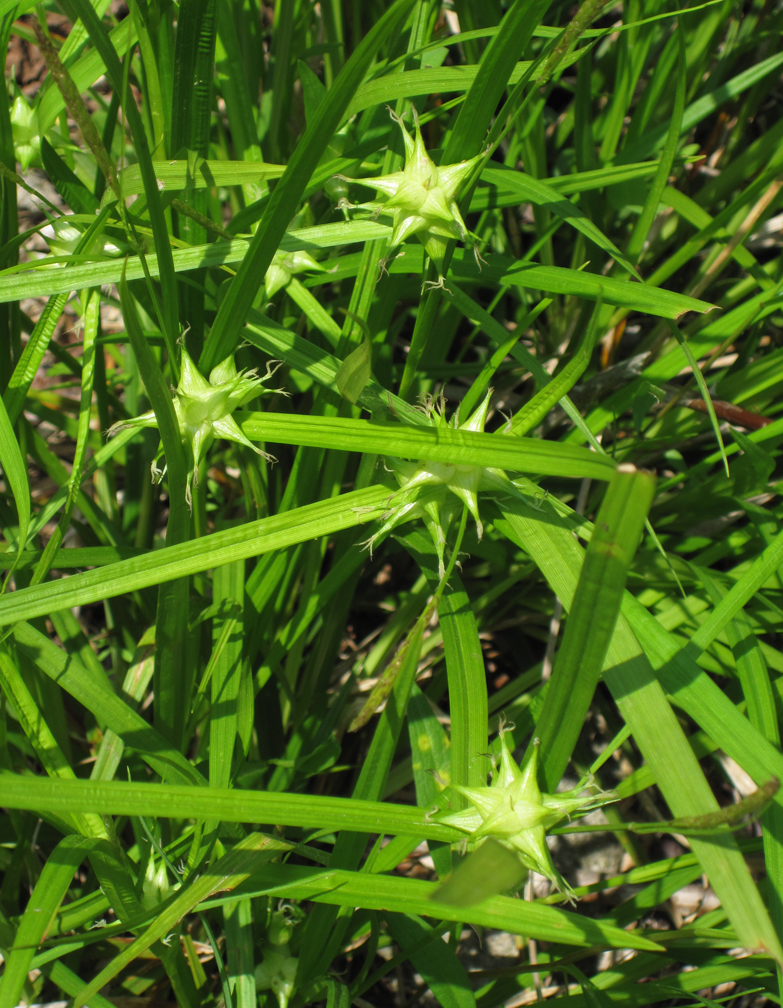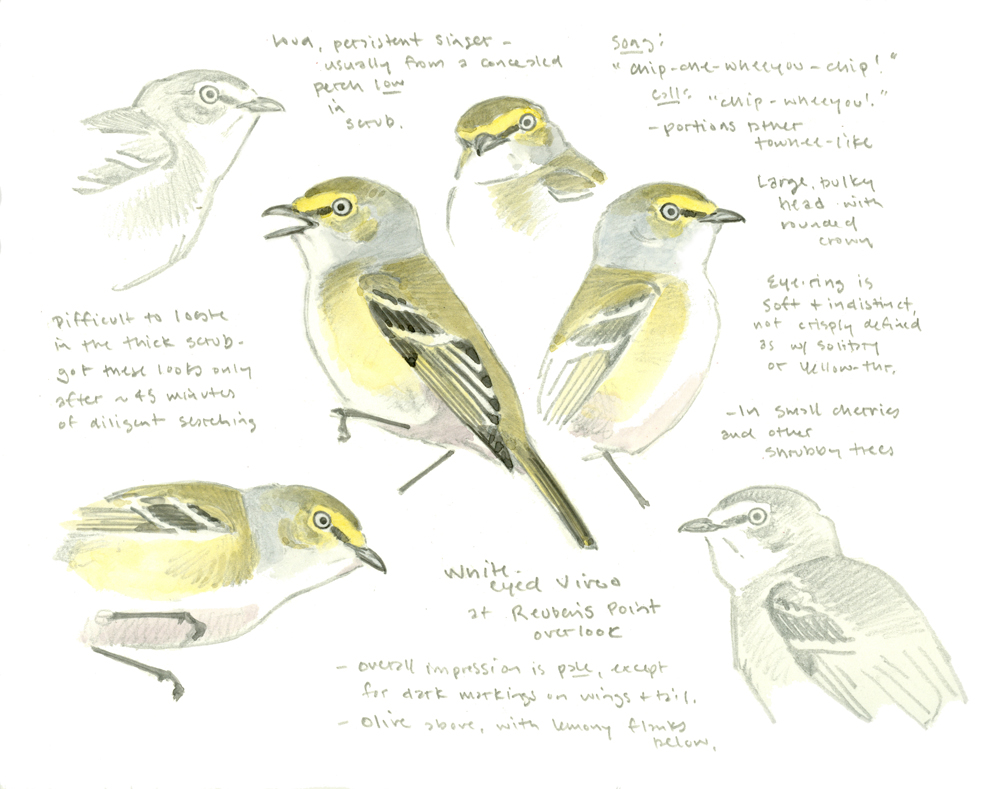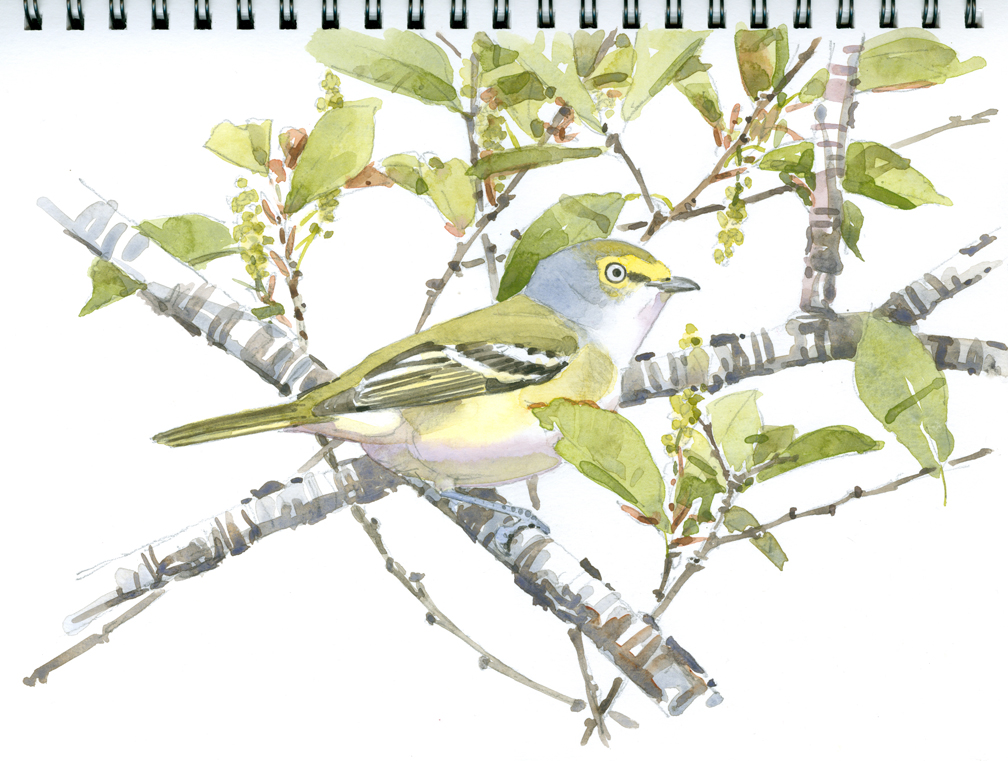We are extremely excited to display a selection of art from our first annual juried youth bird art exhibition. This annual exhibition is open to any children and young adults age 4 to 18 years old. All selected entries will be on display at the Museum of American Bird Art from September 23 to December 11th. Entries for our second annual exhibition will open in early 2017.
Barn Swallow in Flight, Anna Rose, Age 15
“Every spring, my friends and I visit the infamous Magee Marsh in northwestern Ohio. While we were there, we saw many vibrant and magnificent warblers. Yet, of every single species we saw, I was enraptured by a small flock of Barn Swallows at the edge of a small pond. I watched them for nearly half an hour and quickly sketched their poses. Eventually, my favorite bird became a finished work of art.”
Anna Rose, Age 15, Barn Swallows
Orioles and Oranges, Anna Rose, Age 15
“Ever since I was a baby, my mom has been trying to attract orioles to our family bird feeder. Finally, one afternoon this spring, a single male Baltimore Oriole landed on an orange. A few moments later, six more orioles joined the first. It was an amazing few days as the orioles regularly visited us. My mom and I will always remember the orioles that visited us this spring as one of the highlights of our birding experiences.”
Anna Rose, Age 15
River Hunter, Aaron Melendez, Age 9
“The bird I painted is a Belted Kingfisher. I painted this bird because I like to go birding. It reminds me of family trips to the Indiana Dunes State Park. I also painted the Kingfisher because it is a great example of a nice dark blue.”
Aaron Melendez, Age 9


